April 28, 2016 “37 year old son of Lego billionaire takes the helm as Vice Chairman” Congrats, Thomas Kirk Kristiansen, now that you’ve inherited the Lego legacy, and named your daughter and five female cousins as ‘most active owners’ in the young generation family mix, I have high hopes we’ll see some gender stereotypes disappear and brain plasticity triumph! Here’s to positive pursuits!
June 24, 2015 Update Lego gets eco-kudos in the media for saying “no” to plastic and investing millions into searching for a sustainable material…Now if they can just work on BRAIN PLASTICITY building on girls strengths, instead of “pretty, please?” Hmn…
Update June 4, 2015 Annnnnd…”Lego Friends” failed girls AGAIN…Every possible opportunity to build on brain plasticity and the default is to bring in a male pilot and pinkify the plane?
Since Lego “Always” blunders with super-sized missteps on the fem forward front, perhaps they could take a page from JetBlue’s successful social media and salute the ability to “Fly #LikeAGirl.”
Read this excellent indictment of Lego’s repeated pattern of framing external beauty and stereotyped “service” fluff-n-stuff over substantive smarts and STEM “fem forward” possibility to raise the bar for collective knowledge on the planet.
Once is an “oops”…MULTIPLE iterations, selling 4- 7 year olds beauty tips and vapid values of self worth despite research data, worldwide consumer pushback and public sentiment pointing the other direction is duplicitous drek promoting appearance-based cues to girls selling insecurity for profit with a marketing bullhorn.
Why does this stuff matter so much?
Because it sets precedent, tamps down child development, thwarts behavioral “see it, be it” progress for girls, and blatantly manufactures sexism to be sold in subtle, pervasive ways.
“Once revealed, it can’t be concealed” applies to corporate credos and brand gaffes too…
Update Oct. 26, 2014 As we all know by now, the new female scientist mini-fig set (shown ABOVE) made a big splash in August 2014…but fell into limited edition/hard to find collector’s abyss, infuriating many parents, STEM enthusiasts, and educators.
PLEASE Lego, build on promoting positive plasticity not mass market stereotypes for big box retailers. Building creatively, not just ‘assembly kits.’ The market is there, the demand is high, the timing is right, and parents are primed to seek out STEM skill sets beyond beauty duty.
Lego, you’re the big kahuna as the world’s largest toymaker now, surpassing Mattel…the world is watching…Make it count.
June 4, 2014 Spoiler Alert: Official announcement that Lego is slated to release their new female scientist mini-fig set by summer (Aug. 2014)! Parents, time to ‘play it forward’ and show this stuff will SELL, well. (10-26-14: And it did…but the female scientists were still relegated to limited edition discontinuance as ‘Friends’ dominate big box retail store shelves)
Original Post: Jan 1, 2012 It’s a New Year of high hopes, fresh starts and corporate credos getting a sponge-bath. Here’s hoping companies will begin to listen to consumer concerns from the START of product builds rather than mopping up marketing messes AFTER-launch, scrambling to reframe messages ‘um, what we really meant was’…
Case in point? Mattel’s backpedaling, reframing and attempted goodwashing of their absurdly sexualized Monster High dolls. And quite possibly soon? The marketing myopia of Lego Friends.
I’m not ‘outraged’ or ‘freaked out’ or whatever loaded media-baiting punditry is flinging about regarding the new Lego Friends line targeting girls with the pinkification of ‘ladyfigs’ (complete with itty bitty breasts, curves, names, backstories, as beautified assembly props instead of open-ended imaginative, buildable play) I am baffled.
How (and why) are we missing profound opportunities to leverage neuroscience breakthroughs for positive change, wellness and play? With all this Lego research ‘anthropology,’ why aren’t we closing learning gaps with innovation?
How can we finally be tossing aside ‘hardwired’ corpus calossum theories on differences in boys/girls, acknowledging brain plasticity and realizing this play pattern/edu deficit stuff is NOT ‘set in stone’ and yet simultaneously standby to see Lego spend $40 million in mega-marketing bucks to proceed to SET it in stone. Truly…baffling. Why would we DO that?
It confounds me that after we’ve connected the dots on the hackneyed ‘girls are more verbal, boys are more spatial’ themes only to find they’re not ‘wrong’ but are simply ‘learned’ in lather/rinse/repeat toy choice, environment, and behavior mode, that someone isn’t wildly waving their hands saying ‘hey, let’s look at this, make changes by design and improve outcomes for BOTH genders.’
Spend a little time clicking through the 45pp bibliography research in Lise Eliot’s Pink Brain, Blue Brain: How Small Differences Grow Into Troublesome Gaps and you’ll see countless opportunities to use play and toy design to subtly COUNTER-market stereotypes and behavioral bias with FAVORABLE outcomes for BOTH genders.
But noooo…The toy industry continues to take the lame and lazy, quick buck-chuck free-throw into a $40 million marketing abyss of more appearance-based cues with hair dryers, handbags, and coinage and consumption ’cause it’s easy to spike sales to regain a toehold with “50% of the world’s children” (girls) that they never should’ve shunned in the first place…
As my media literacy colleague sums nicely in this Lego Friends roundup on learned behavior in “The World That Has Been Pulled Over Our Eyes” it seems we’ve gulped down very large glasses of this gendered cultural Kool-Aid and now run it in our mental relays systemically as faux fact.
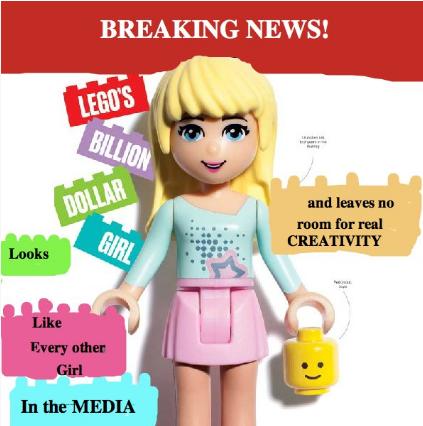 Despite the neuroscience research, the tools, (and in powerhouse toy companies like Lego and Mattel, even the money!) to stretch the creative confines of imaginative, open-ended play rather than crank up the volume on same ol’ pink and blue blindingly simplistic gendered images to represent Lego masculinity and now feminity…we continue to take in these messages as ‘givens’ addressing marketplace desires of ‘what a girl wants.’ (forget about ‘what a girl needs’, eh?–Visual satire of the Bloomberg BizWeek cover by PBG: Powered By Girl culture crashing spoofers)
Despite the neuroscience research, the tools, (and in powerhouse toy companies like Lego and Mattel, even the money!) to stretch the creative confines of imaginative, open-ended play rather than crank up the volume on same ol’ pink and blue blindingly simplistic gendered images to represent Lego masculinity and now feminity…we continue to take in these messages as ‘givens’ addressing marketplace desires of ‘what a girl wants.’ (forget about ‘what a girl needs’, eh?–Visual satire of the Bloomberg BizWeek cover by PBG: Powered By Girl culture crashing spoofers)
Lego’s four years of “girls research” brings us accessorizing, color preferences, shallow grooming themes, and like many other branded toys right now, “role play with canned personas.” (particularly disturbing when they’re damaging, hyper-sexualized ones like the vampy trampy Monster High Mattel dolls conjuring visions of dead Bratz)
And OF COURSE they will ‘sell’ …that’s not the point.
Research is only as good as what you do with it, and if Lego chooses to lose the opportunity to uplift and inspire through toys to think out of the ‘brick box’ opening new landscapes in buildable play for girls, then we just have ‘more of the same’ marketing maneuvers using figurines to snag sales from companies like PlayMobil…not much higher-minded thinking going on there.
But let’s see…Gee…
“WHAT IF”…
…We begin early on building new fluencies by shifting rather than reinforcing play patterns to stop gap educational chasms that seep out in early years of ‘testing’ after exposure to repeated environmental influences?
…We focus on using those thousands of hours of practice in play purposely veering toward more verbal prowess for boys and spatial ability for girls to close the whole reading/math gender stereotype gap?
… We redirect that $40 million of Lego marketing money toward cross-training childrens’ brains via play to amp up their mind muscles and fill learning gaps in BOTH genders?
…We cease to amplify the same ol’ gendered strengths and weaknesses as faux marketing ‘givens’ until it becomes a self-fulfilling prophecy? (and then shake our heads at why boys and girls are just ‘different’ in learning styles)
From art to architecture we’ve already seen girls spatial skills expand through 2D and 3D visualizations, rotating objects, Tetris, videogames…
…Yet we’re deeply poisoned with stagnation drinking in this ‘beauty over brains, style over substance’ cultural Kool-Aid…
…And Lego is about to serve us a $40 million unquenchable thirst for it to lap up like a loyal consumer dog. (Want to think different on this? Check out this post on CraftKnife using Tetris magnets in girls casual play showing it doesn’t have to be digital NintendoDS style, videogaming and such, for sign language, manipulative puzzle play, and other spatial skill play has boosted girls’ math acumen too)
There is no doll vs. ball gene. These are delusions of gender…And we now know “men and women are both from earth after all” so it’s frustrating to see that while we make advancements in mythbusting with brain plasticity and the malleability of the mind and dynamic circuitry and such which SHOULD open new doors…
…Marketers and toy industry influencers are CLOSING and compartmentalizing them in hyper-gendered “girls only/boys only” short-sighted, sloppy thinking.
(Media must read: Cordelia Fine’s amusingly written “Delusions of Gender: the Real Science Behind Sex Differences”)
I’m NOT against pink or glittery fun or gender preferences or the free market system of Lego cashing in on new product line expansions…nor unicorns, fairies and ponies fergoshsakes.
To be as clear as a translucent sparkly glass slipper:
I AM against stacking the deck of ‘learned behavior’ with pervasively marketed signals of stereotyped imagery embedding into the brain with stiflingly narrowcast assembly-line rote mimickry. I far prefer pure, imaginative, problem-solving free form fun.
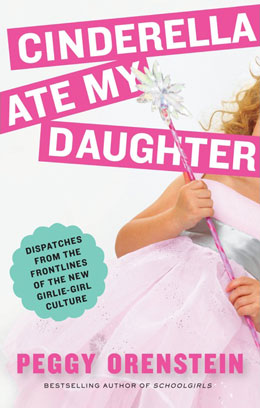 As “Cinderella Ate My Daughter” author Peggy Orenstein reasoned in this NYT op-ed Does Stripping Gender From Toys Really Make Sense?
As “Cinderella Ate My Daughter” author Peggy Orenstein reasoned in this NYT op-ed Does Stripping Gender From Toys Really Make Sense?
“At issue, then, is not nature or nurture but how nurture becomes nature: the environment in which children play and grow can encourage a range of aptitudes or foreclose them.
…So blithely indulging — let alone exploiting — stereotypically gendered play patterns may have a more negative long-term impact on kids’ potential than parents imagine. And promoting, without forcing, cross-sex friendships as well as a breadth of play styles may be more beneficial.”
Yes. Yes. And abso-freakinglutely yes. Think Different, Lego.
Think Different, parents. Think Different, marketers, educators, and influencers of wee ones…
 Let’s not throw copious quantities of money into the rabbit hole marketing the appearance-beauty bit to commodify childhood with cruddy cookie cutter gender cues yet AGAIN, shall we?
Let’s not throw copious quantities of money into the rabbit hole marketing the appearance-beauty bit to commodify childhood with cruddy cookie cutter gender cues yet AGAIN, shall we?
I LOVE Lego.
It has always been about being architects of the mind, about possibility and what you can DO, build, imagine, make, and move…
I’ve always enjoyed that the product is more DIY “MakerFaire” and less ‘collect the set’ happy meal mentality which feeds the ‘buy it once, build it once’ box of boring. But sadly, that’s devolved over the years too.
Nothing irks me more than when companies ‘had it right to begin with’ (Lego, Playdough, WikiSticks etc) only to impose striations in the name of ‘marketing’ that have not just altered play, but hampered it. With Playdough for example, there’s a huge difference between marketing cool extruders to create funky new shapes and colorful strands…versus pre-formed imprinting molds of licensed cartoon characters to stick in the goop and pull out a face.
(For the record, I’m also not wild about Lego Friend’s copycat marketing to riff off of American Girl productization and hopscotch to the cash counter with must-have add-on accessories instead of using The Case for Make-believe …It’s shortcut thinking and smacks of tactical vs strategic for long term greater good…and as PFZ states in this post, ‘it’s lazy’)
Dr. Stuart Brown who wrote Play manages to zero in on the problem when we mass market and narrowcast children with pre-scripted vapid role play.
He’s founder of the National Institute of Play, though many know his classic play video of the ‘polar bear and dog’ in the tundra as much as his work in the science of play.
He sums:
“As they grow, kids are TAUGHT OUT of this imaginative approach to play…Kids get toys that come with a preset collection of ideas about who the characters are and how children should play with the toys. This kind of preformed script can rob the child of the ability to create his own story…instead mimicking the expressions and lines expected to say.”
(More science and studies in this realm unfold in Susan Linn’s “The Case for Make Believe” –see Shaping Youth interview and the link list at the end)
 I promised myself I wouldn’t go all ‘deep dive’ research-wonky citing umpteen sociological media studies (though Care Bears vs Transformer ads/influence gives you a snapshot) nor would I pick apart Lego’s research flaws using data more as a validation tool for purchasing power vs scientific inquisition (“No one should approach the temple of science with the soul of a money changer–Thomas Browne”) but it’s quite clear I already have…so one last finger wag: To me, Lego Friends is more about turning a profit very fast to play catch up in appealing to girls after dissing them for years in ads than instilling visionary thought.
I promised myself I wouldn’t go all ‘deep dive’ research-wonky citing umpteen sociological media studies (though Care Bears vs Transformer ads/influence gives you a snapshot) nor would I pick apart Lego’s research flaws using data more as a validation tool for purchasing power vs scientific inquisition (“No one should approach the temple of science with the soul of a money changer–Thomas Browne”) but it’s quite clear I already have…so one last finger wag: To me, Lego Friends is more about turning a profit very fast to play catch up in appealing to girls after dissing them for years in ads than instilling visionary thought.
Mind you, I have a bias here…
I spent 25 years as a creative director/writer in new product development and branding, so I’m shaking my head ‘This is it? Really?’
After all, they turned a perfectly solid unisex product into a ‘boys only’ toy when they could’ve opened a RAINBOW of possibilities by including the girls from the get go.
THEY not only created their own problem, they’re now making it worse with their $40mill ‘solution’ throwing even more visualization and stratification into an already needlessly polarized marketplace.
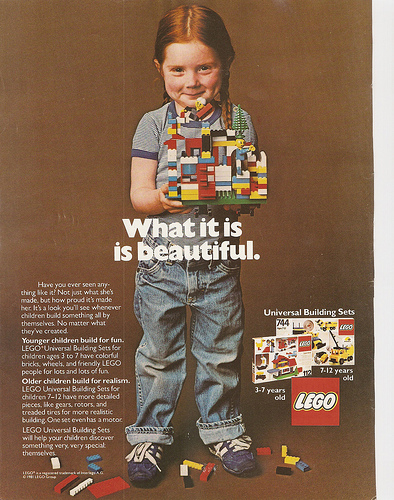 When I signed this Spark Change petition for Lego Friends to ‘bring back beautiful’ in the form of their original, authentic depiction of free form play and this Care2 petition by New Moon Girls to outreach to Lego asking girls to help design what appealing to them would look like, it was not to be a ‘firestarter’ or wrist-slapper or whatever…
When I signed this Spark Change petition for Lego Friends to ‘bring back beautiful’ in the form of their original, authentic depiction of free form play and this Care2 petition by New Moon Girls to outreach to Lego asking girls to help design what appealing to them would look like, it was not to be a ‘firestarter’ or wrist-slapper or whatever…
It was to give voice to mindfulness about what happens when mega-marketing hype runs amok and floods the senses with pre-sets and “shoulds” that can shift neuroscience into neurosexism…
It’s not a ‘don’t produce this, or don’t buy this’ boycott issue, it’s a common sense plea for corporate responsibility from concept through completion …for toys, for products, for media messaging, for ANY mass footprint on the sands of kids’ souls. Simply ask:
“What will kids take away from this?” What is the ambient wallpaper in the mind’s eye, seamlessly seeping into their psyches?
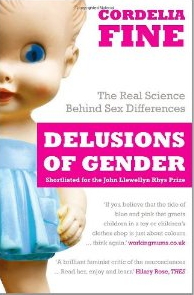 It’s very telling to observe that at age one both sexes play with dolls (enjoying faces, voices) by age two they already begin to ‘figure out’ identity through toy choices and reactions, and by age three meta-analysis shows environmental impact of sociological reward/reactions to the point that by age 5 girls still can split time evenly between ‘boys and girls toys’ whereas boys are no longer ‘given permission’ to play with girls’ toys. Sheesh.
It’s very telling to observe that at age one both sexes play with dolls (enjoying faces, voices) by age two they already begin to ‘figure out’ identity through toy choices and reactions, and by age three meta-analysis shows environmental impact of sociological reward/reactions to the point that by age 5 girls still can split time evenly between ‘boys and girls toys’ whereas boys are no longer ‘given permission’ to play with girls’ toys. Sheesh.
We need to be mindful of mindlessness as well as the distorted rote ‘rules’ that ADULTS impose on free play.
Whether it’s mach0-limitations imposed upon Legos for boys or the pinky-princess beautifying cupcake sweetness for girls. Using media to market with mindfulness isn’t too much to ask, folks. It’s just like being responsible in launching toxic behavioral cues via misogynistic misfires, or the inevitable problems of bringing alcopops to market targeting urban tweens.
Finally, my frustration with the Lego Friends launch also involves a “big think” larger scale universal industry issue, watching toy development shift from asking inquisitive “what if” open-ended entrepreneurial questions (innovation/wonder/creative buildability) to focus more on ‘how do we reach’ (marketing/proliferation/packaging) …
…This goes for media and marketing formulaic mindsets universally, whether it’s Hollywood box office retreads or kids’ trends that rollout with virality turning indie spirit into lemmings in lockstep.
Why not build on possibilities instead of assemble in conveyor belt sameness? Why not make it cool to be your own person?
Lego research shows girls like ‘role play’—Fine. What better 21st century storytelling than bridging into transmedia maybe even tossing in indoor/outdoor role play fun to enhance discovery instead of “providing names and backstories” with rote replication?
Where IS the ‘what if?’ The cutting edge? The mind-stretching, brain-tapping innovation through creative play instead of locked and taped inside a four-corner traditional box of vapid values in ‘girly girl’ distortions?
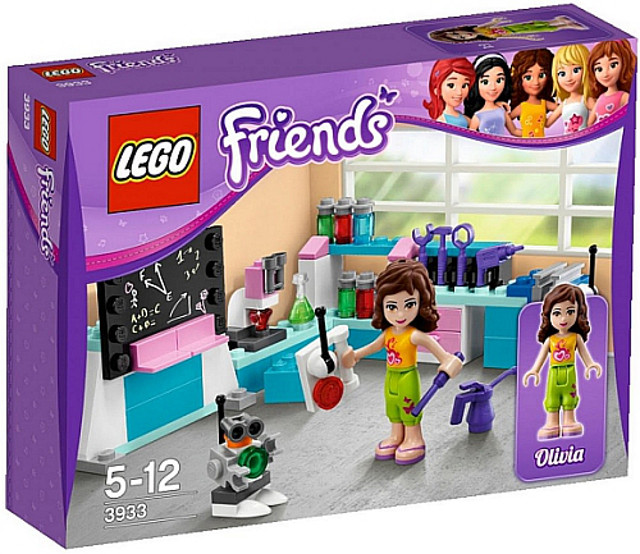 No one’s trying to thwart Lego’s growth to build onward…
No one’s trying to thwart Lego’s growth to build onward…
…We’d just like to refrain from mopping up the mess of mass marketing landing on girls as stereotyped limitations instead of a gateway for girls to build lands of their own.
I understand their ‘stealth STEM’ motivation, I just don’t see it deployed. Right now this is assembly, not building.
And if they wanna go for stealth mindshare, then fergawdsakes, market the heck out of anything BUT ‘beauty and giggles’ and show-n-tell the robust, fun, bleeding edge coolness cache of pretend play using Legos with other angles…Animal habitats, environmental allure, ANYthing other than empty-headed salon and nails fluff-n-stuff. (shown above, the token ‘smart girl’ Olivia, this is as cutting edge as it gets in the sets, folks)
Lego could make big bucks with TONS of tactile and auditory play ideas as kids grow that can be ‘sold’ to kids as ‘add-ons’ and still keep it about building and creating instead of assembling and primping…light and motion sensors, scent infusions, sensory stim; even seeding buildable online and offline integration with thought challenges to build prototypes for “future finding” discoveries (e.g. Legos for cool creations like ‘ShopGirls’ prototypes with a Shell/STEM eco-marathon all-girls green-race car team to solve fuel shortages)
Innovate. Build. Balance. But most of all, mix it up!
Colors, gendered play groups, play patterns, all rainbows of bright brain yoga to shape all quadrants.
Lego may need to look BACKward to an era when they had it right the first time, showcasing the sheer beauty of free play and the joy of a toy self-created. Then vault forward with purpose, instilling positive media messaging of discovery and an open canvas of self-worth and possibility…
THAT would be well-played. For girls. For anyone.
New discovery: 2-4-12 Fabulous, spot on analysis via video from Feminist Frequency.com; brilliant points made…with connect the dots corollary to aspiration gap covered by Sheryl Sandberg covered at Davos Economic Forum. (see Dr. Jen Shewmaker’s post)
“…It often happens that scientists say, “You know that’s a really good argument; my position is mistaken,” and then they actually change their minds and you never hear that old view from them again. They really do it. It doesn’t happen as often as it should, because scientists are human and change is sometimes painful. But it happens every day. I cannot recall the last time something like that happened in politics or religion.” —Carl Sagan
Let’s hope Carl Sagan is right, and that Lego listens.

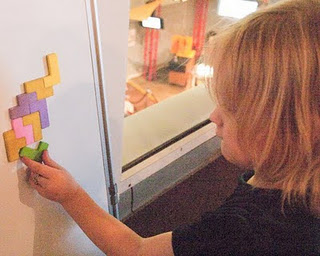
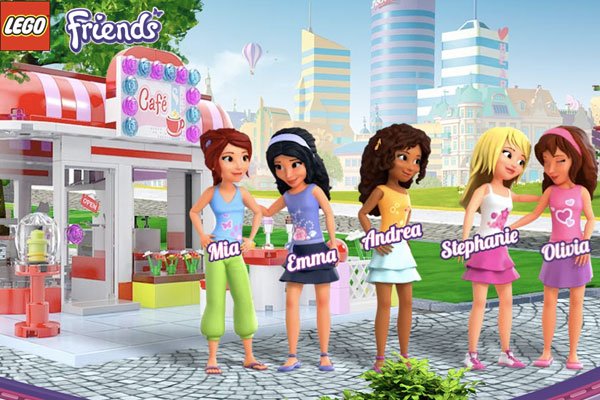








A fantastic read and a great analysis! Here here! This mother of 3 daughters applauds you
Great piece! This is a fantastic list of really informative links and reading suggestions (I’m midway through Delusions of Gender right now, and it is a seriously fantastic read), and there is just so much going on with the Lego stuff I can hardly keep up. I love Lego as well, and it’s incredibly frustrating to me to see them swallowing the “girlification” pill in order to boost sales when the obvious marketing solution is staring us all in the face.
Girls don’t need pink and simple toys, and boys who like pink shouldn’t be discouraged from being able to play with pink blocks because they’re “for girls.” Lego’s own mission statement involves encouraging innovation, but all they’ve done here is jump on the bandwagon.
Amy, what an amazing article. I’m impressed by research you include. You provide a “big picture” on ways toys influence play & rewire brains. I have always enjoyed Legos, but I do not like what I am reading here. I’d like to see Legos get back on track to build toys that continue to challenge the mind and abandon the mistaken notion of “pinkifying” their products.
Great post with some excellent resources! This is such a tremendously disappointing missed opportunity by Lego for bringing boys and girls TOGETHER. In addition to perpetuating gender stereotypes, these messages and images polarize girls and boys and contribute tremendously to the idea that they grow-up in “separate worlds.” In the overwhelmingly disproportionate amount of time that kids spend in single-gender peer groups, they hone their communication and problem solving skills in isolation of one another. As boys and girls socialize each other in different ways, this “great divide” widens and creates all sorts of negative attitudes and behaviors directed at the opposite gender. If children are given more chances to establish some common ground,work, play,cooperate and collaborate with one another, they will be more inclined to engage more often and learn from and about each other more. The world is co-ed – let’s do something to help bring our kids together.
Beautiful post. Yes, I, too, find it increasingly frustrating that many marketers are drawing a thick pink and blue line between their female and male consumers—saying this is for girls and that is for boys. It tells girls “you must want this” and boys “you must want that”—and then, they do, because the gendered-items practically has their names on it. If the idea here was to take the current state of a gender segregated marketing society and essentially bring girls through the current pinkified door to help get them through the main LEGO door (providing more challenging, less limiting building and critical thinking- less gendered ad-ons, a path to the gender-neutral LEGO products, widening the likelihood of the reaction “This is for me!”). But that is not what’s going on here. I know this because there is no attempt to entice girls into buying typical LEGO sets. They are housed in the boy section of stores. They use boys to market these sets. They use colors and fonts and words that tell boys this is for you and decidedly, this is NOT for girls. And so, girls believe it. Girls are not hard wired to buy pink, thinned out, unchallenging activity games— marketers are pink-washing them into believing they are. The negative effects are that we limit girls. We tell them what they should and DO like and what they should and DO look like and what they should and DO think and how they should and DO act. And that isn’t good for anyone.
wow, that is a lot of good information. I’ve only recently started to read about this new lego line and am too baffled by this move. I am very curious as to how it does in the marketplace. Sadly if it does well, none of this argument is going to matter. “Tried and True” people will say… sadly.
hope to find time to write about this as well.
Just want to thank all of you for your thoughtful comments and insights…I’ve been away/unplugged on ‘digital detox’ and am about to come back into the flow of this controversy, and definitely would like to reiterate that Lego STILL could make this a ‘win’ by redirecting their focus and upending their marketing game plan to right some ludicrous wrongs.
As a former branding gal, I can say that once that kind of money is tossed into the media mix it’s a ‘genie’s out of the bottle’ mop up challenge to redeploy resources and expand rather than contract (remove) the line.
I know they could take that $40 mill mktg budget and reroute it pronto for a very doable ‘win’ that opens rather than closes doors of the mind…for girls AND boys. Lego? Ping me, and I’ll even deploy some gratis ‘fixes’ from contests to transmedia in the hopes you’ll start bringing in consultants BEFORE producing a line rather than after.
We need builders of ideas not assemblers of status quo for a healthier tmrw…so hope Lego understands the need to ‘go back’ in order to ‘go forward’ with inclusiveness.
Thank you all again for using your voices, words and wisdom to view what many toss aside as a ‘micro’ issue, without seeing the macro, pervasive impact.
Many are listening. And clearly those that aren’t, should be. Keep raising the bar…(and we’ll be able to turn this cultural tanker of lowest common denominator thinking around) Our future is counting on it.
Hello. How much time did writing this article take?
I don’t keep track…but the research does add up…so yah, thanks for noticing…;-)